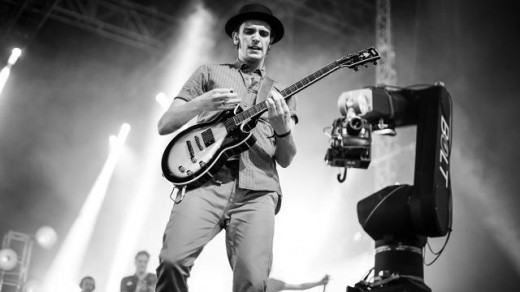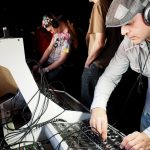“Guitar Hero” Is Back: “We Wanted To Give People Stage Fright”
A crowd that seemingly reacts to your on-stage performance in real time was key to reviving the concept.
It is 2015, and I am playing Guitar Hero.
The concept is the same as it was when I last played in 2010: a plastic guitar, an on-screen rolling road of cues for “playing” a song, and a tally of points for hitting notes (or more accurately, buttons) at the right time. It’s still fun. And I’m still bad at it.
Activision discontinued the hit game in 2011 after sales abruptly declined. Competing music games like Rock Band and DJ Hero had met a similar fate, and at the time, Activision blamed “declines in the music genre” for the decision to abandon it. But time has passed. People who bought music games in 2011 now have new consoles that don’t play those games anymore, so there’s potentially a renewed appetite for the genre. Electronic Arts is resurrecting Rock Band, and Activision is bringing Guitar Hero back this fall with a new game called Guitar Hero Live.
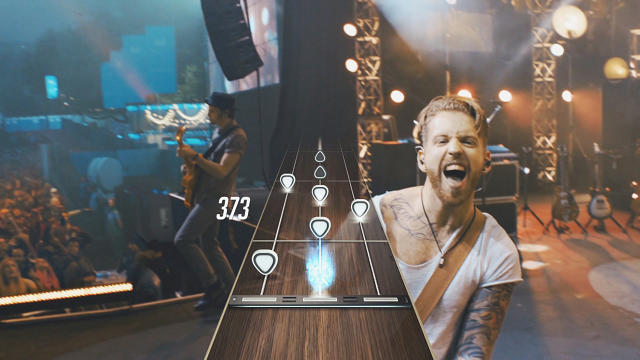
In its new incarnation, the guitar’s six buttons are stacked in two rows, like an egg carton. There’s a feature called “Guitar Hero TV” that allows would-be rock stars to access new songs and compete against others. But the most significant change is hinted at in the title: “Live.” Instead of a third-person view of cartoon rock stars, the new version of the game puts you on the stage of a live-action video concert to experience rock stardom from a first-person perspective. What you see is not static—the band and the crowd react to how you’re doing in the game. “We wanted to give people stage fright,” says Eric Hirshberg, the CEO of Activision Publishing.
When I start (almost immediately) missing notes during the demo, for instance, the drummer pops her eyes out of her head in a way that can only be translated as, “WTF?” The guitarist gives me a “What’s going on, man?” concerned face. I’m told, before I’m mercifully cut off, that if I screw up badly enough, the crowd will just go silent.
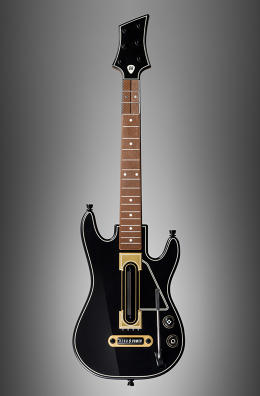
“That’s particularly brutal,” explains Jamie Jackson, the creative director of FreeStyleGames, the Activision-owned studio that made both Guitar Hero Live and DJ Hero).
Creating this scene wasn’t straightforward. It meant that FreeStyleGames had to figure out how to instantly and seamlessly transition live-action video between positive and negative reactions based on a user’s play. To accomplish this, the studio used a camera trick.
But first, it needed to build a crowd. It cast about 400 people for each song, sometimes invading concerts to look for people that fit a particular genre. After it filmed them once, it asked them to change outfits and shuffled them around to film again. When it spliced the scenes together, that made them look like 800 people. Then they did it again, which made them look like 1,200. They didn’t stop until they had what simulated a 5,000-person crowd.
FreeStyleGames also needed to build bands to perform alongside players. All of the people cast actually play in bands that were assembled into new, fake bands to perform epic lip-synching for the game.
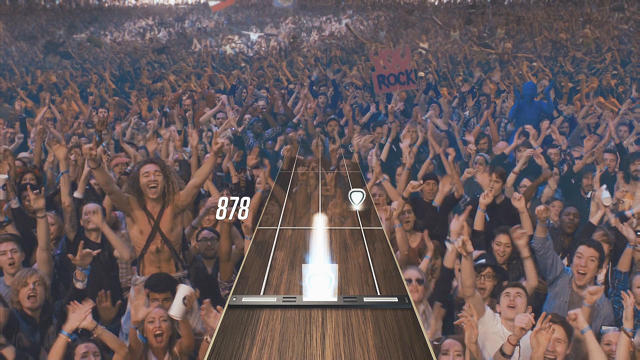
To get a full range of reactions required multiple takes. “Hands up if you’ve split up with someone,” Jackson would say to get the crowd moving. “There are three stages of breaking up: the first stage is denial. The second stage is sadness. And the third stage is anger. We are going to go through all three stages right now.” (These are the faces you’ll see when you miss your notes—more on that later.)
Some advanced filming technique was also required to make the crowd reaction look seamless.
Jackson borrowed an idea from the way Peter Jackson filmed a scene in The Hobbit. In order to make Gandalf look much larger than the hobbits he was standing next to, Peter put Gandalf and the hobbits in separate sets, each with its own camera. The cameras were then programmed to make the same movements, though the one on Gandalf was closer, so that he looked bigger.
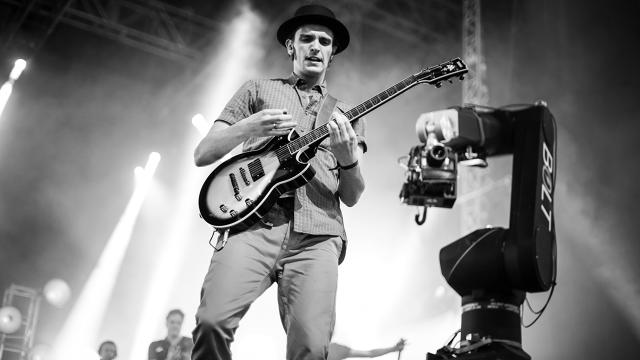
For the Guitar Hero crowd, FreeStyleGames adopted a similar strategy. First a real cameraman filmed the scene with a motion-capture camera rig. Then, data about where and how that cameraman moved was fed into a camera (they named it Priscilla), which was mounted on a big, swinging robotic arm that could be programmed to move automatically (it looks like this). This setup allowed FreeStyleGames to take the exact same shots from the exact same angles when it was filming the band and crowd having different reactions, which means that it can now seamlessly swap out the video depending on what reaction your performance warrants.
Sometimes, I’m told, the crowd loves you so much that it sings along. But when Jackson sets the level to advanced so I can get an idea of what jamming on that level might feel like, I realize that, despite the game’s ability to seamlessly transition the crowd from hate to love, for the foreseeable future, it’s going to be all “WTF” eyes and silence for me.
Fast Company , Read Full Story
(246)

